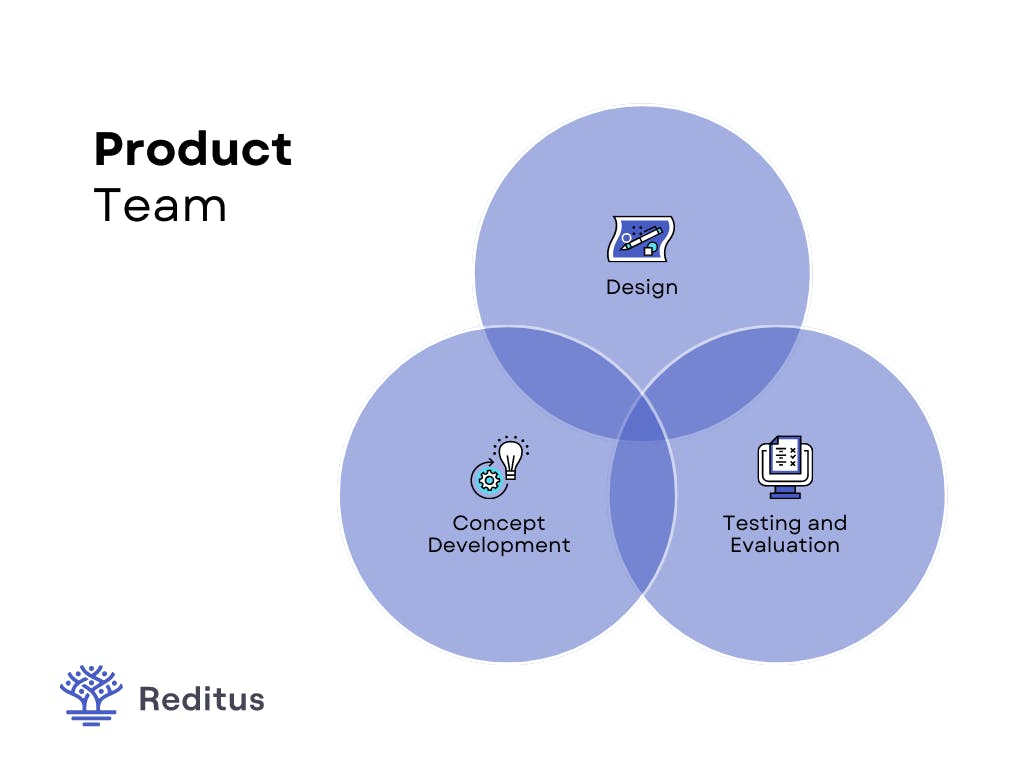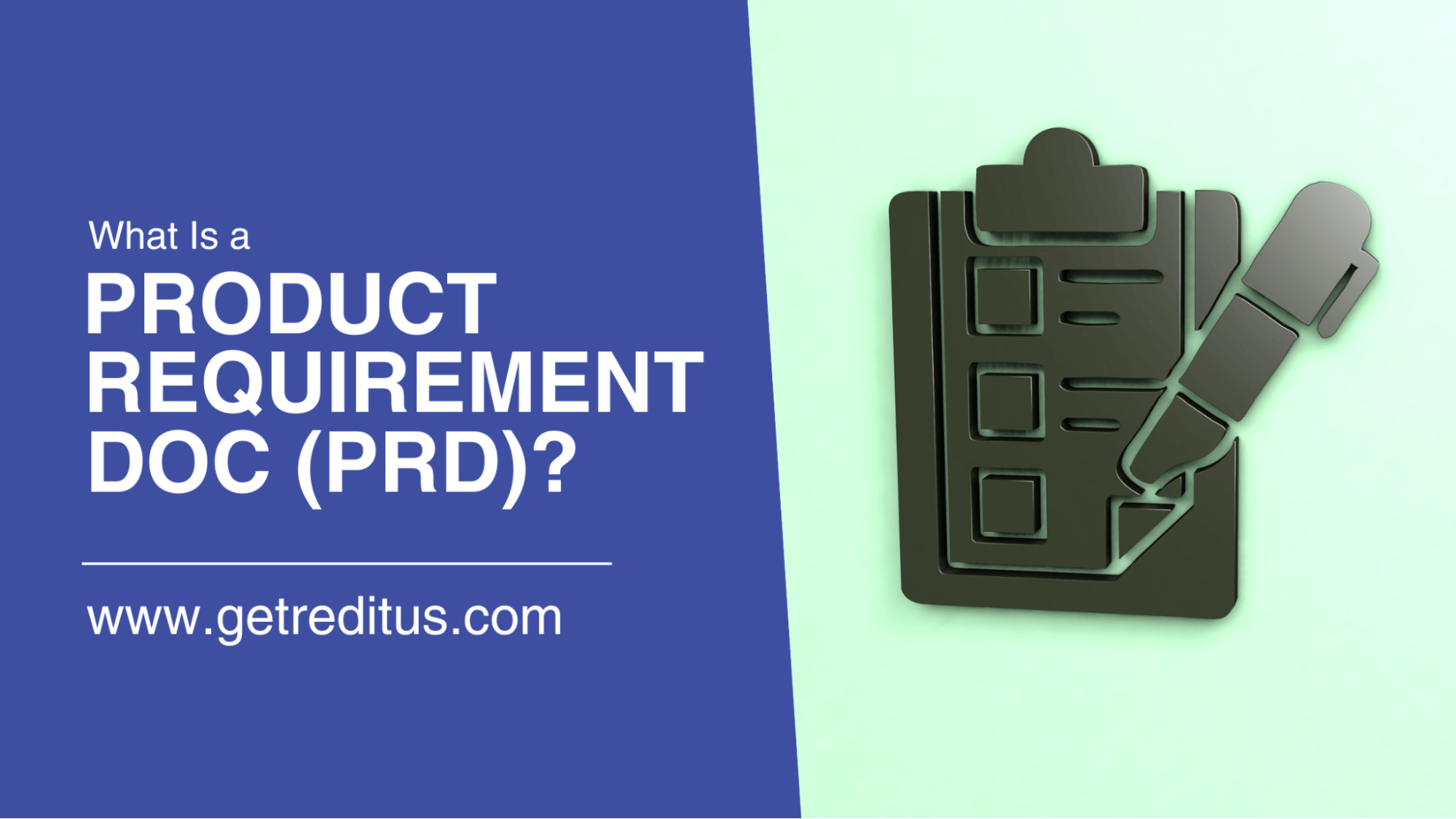What Is a Product Team? Full Guide for Growing SaaS Companies.

When you're a growing tech company, having the right product team can make or break your success.
Many entrepreneurs overlook the importance of this group. Still, it's essential for any business looking to scale and thrive — no matter which market they operate in.
In this blog post, we'll explain what exactly a product team is and how it functions within an organization so that you can maximize its potential as you expand your business.
Table of contents
What Is a Product Team?
A product team is a group of people working to create the best possible version of a product. This means optimizing the existing development and developing new products that meet customers' needs.

The product team typically comprises people with various skill sets, including software engineers, product managers, UX/UI designers, and QA engineers. The team size can range from a few people to an entire organization.
The product team's goal is to create the most successful version of a product, taking into account market trends and customer needs. This means that the product team is responsible for the following:
- Researching the market
- Identifying target customers and their needs
- Prioritizing features
- Developing a product roadmap and timeline
- Testing the product
- Managing the entire product lifecycle
In addition to developing the product, the product team is also responsible for marketing it and ensuring it reaches the right customers.
Why Do You Need a Product Team?
A product team is essential for any growing business, providing the know-how necessary to create successful products. A dedicated and knowledgeable product team allows you to maximize your resources and get the most out of your product, helping you stand out from the competition.
A product team can also help you quickly identify and address problems with existing products' issues and create new products that meet customers' needs. This helps ensure that your products remain on the cutting edge of technology and stay relevant in a quickly changing market.
Some other benefits of building a product team might include the following:
- Increased creativity: Having a product team with different skill sets and backgrounds can lead to more creative solutions to problems.
- Better customer service: As the product team is responsible for understanding the customer's needs and providing solutions, they can help improve the quality of customer service.
- Improved collaboration: Having a product team in place can help foster better collaboration between departments and individuals.
- Reduced costs: A dedicated product team can help you reduce costs by streamlining the development process and avoiding costly mistakes.
- Improved efficiency: A product team can help you optimize your resources and increase the efficiency of your operations.
Above all, having a product team in place can help ensure that your products remain competitive and relevant in the market so that you can stay ahead of the competition.
What Are the Fundamental Roles of a Product Team?
The product team is typically composed of different roles, each with unique skills and responsibilities. Here are some of the most common roles within a product team:

Product Manager/Owner
The product manager/owner oversees the entire product development process, from concept to launch. They are responsible for understanding customer needs, researching the market, creating product roadmaps and timelines, and managing the entire product lifecycle.
A typical product manager/owner will have experience in product management and a good understanding of the development process.
Some of the tasks a product manager/owner might be responsible for include:
- Defining product visions and strategies
- Developing roadmaps and timelines
- Prioritizing product features
- Managing the product life cycle
- Analyzing customer feedback and market trends
- Collaborating with key stakeholders
Product Designer/UX Designer
The product designer, also known as the UX (User Experience) designer, creates the product's user interface and experience.
They are responsible for understanding customer needs, researching the market, creating wireframes and prototypes, conducting user testing, and creating the final product design.
A typical product designer/UX designer will have experience in user experience design and a good understanding of the development process. Some of the tasks a product designer/UX designer might be responsible for include the following:
- Designing wireframes and prototypes
- Conducting user testing
- Creating the final product design
- Collaborating with key stakeholders
- Analyzing customer feedback and market trends
Product Developer/Engineer
The product developer, also known as the engineer, is responsible for developing the product. They are responsible for understanding customer needs, researching the market, creating the product code, testing the product before launch, and addressing any issues.
This role should have a technical background and an eye for detail. Their job is to ensure the product meets customer expectations. They must also stay up-to-date on the latest technology to ensure the product is up-to-date and competitive.
Some of the tasks a product developer might be responsible for include:
- Developing the product code
- Testing the product before the launch
- Addressing any issues that arise
- Collaborating with key stakeholders
- Analyzing customer feedback and market trends
- Staying up-to-date on the latest technology
Product Marketer
The product marketer is responsible for driving the product's success. They are responsible for understanding customer needs, researching the market, creating marketing strategies, managing advertising campaigns, and analyzing customer feedback.
This role should have a good understanding of marketing tactics and a deep understanding of customer needs and the marketplace.
Some of the tasks a product marketer might be responsible for include:
- Creating marketing strategies
- Managing advertising campaigns
- Analyzing customer feedback and market trends
- Collaborating with key stakeholders
- Creating product manuals and user guides
- Creating content to support product launches and campaigns
How Can You Build a Product Team?
Building a successful product team requires careful planning and consideration of the roles within the team. It's important to remember that each function should have clear responsibilities and the resources and support to fulfill them.
Let's explore a few steps to take when building a product team:
1. Define Your Product Goals and Objectives
Setting goals and objectives will help you create a roadmap for the team and ensure everyone is working towards the same path.
Examples of goals and objectives you might set include:
- Developing a new product in X months
- Launching the product to X customers in Y weeks
- Increasing revenue from the product by X%
Ensure that each team member knows the objectives and their role in achieving them.
Remember to create plans for each stage of the product's lifecycle, including pre-launch and post-launch.
2. Define Roles and Responsibilities
Defining the team's roles and ensuring each member knows their responsibilities is essential. This helps create clarity and reduce confusion.
We've already explored some of the roles and responsibilities within a product team. Still, you may also need to include people with other areas of expertise, such as lawyers, finance experts, and customer service professionals.
3. Set Up Communication Channels
It's vital to ensure that everyone on the team can communicate effectively. This could include setting up channels for daily check-ins, weekly team meetings, or Slack channels for project updates.
4. Provide Resources and Support
Every team member should have access to the resources and support they need to do their job effectively. This includes access to customer data, up-to-date market research, and any software or tools required.
It also includes ongoing coaching and mentoring, so team members can learn, develop and grow their skills.
5. Measure and Monitor the Results
To ensure the team is on track with its goals and objectives, it's vital to set up a system to measure and monitor results.
This could involve setting up key performance indicators (KPIs) to track progress or creating dashboards that display real-time data. This will help the team stay focused on their goals and meet expectations.
Conclusion
Building a successful product team is no small feat! It requires careful planning and consideration of roles, responsibilities, resources, and support.
By following the steps outlined above, you can create a team capable of delivering success for your product.
Ultimately, having a solid product team in place can help your business stay competitive and grow. With the right people, processes, and resources in place, you can create a product that stands out in the market and delivers long-term success.

